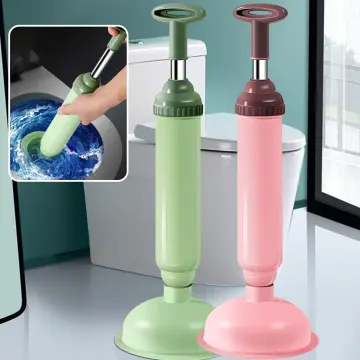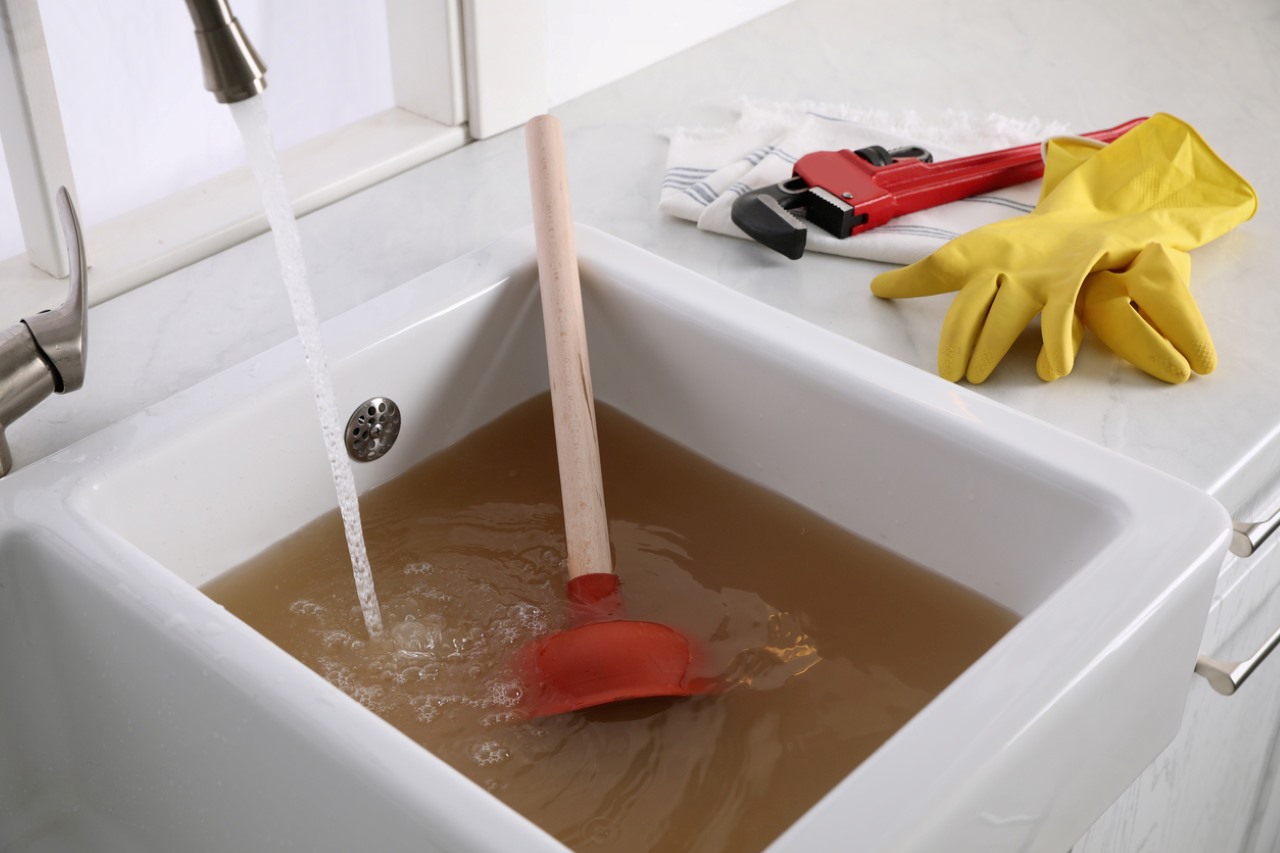Improving Plungers and Drain Cleaners: Professional Methods
Improving Plungers and Drain Cleaners: Professional Methods
Blog Article
The author is making a number of good points on Tips on How to Effectively Use a Plunger overall in this content down below.

Intro
Proper maintenance of house drains pipes is essential for stopping blockages and guaranteeing smooth water circulation. Among the secret devices in every house owner's toolkit is the plunger, alongside different drainpipe cleaners developed to deal with stubborn blockages efficiently. This short article explores exactly how to use bettors and drain cleansers successfully to maintain your drains streaming freely.
Area 1: Understanding Plungers
Sorts of Plungers
There are a number of types of bettors available, each created for different kinds of drains and blocks. One of the most common types include mug bettors, flange bettors, and accordion plungers.
Just How Plungers Job
Plungers service the principle of producing pressure and suction to dislodge obstructions. When properly applied over a drain, they produce a vacuum cleaner that can pull out debris or break up clogs.
Selecting the Right Bettor
Selecting the best bettor depends upon the sort of drain and the nature of the blockage. Cup plungers are excellent for sinks and bathtubs, while flange bettors are better suited for commodes as a result of their design.
Usual Mistakes with Bettors
Staying clear of these mistakes makes sure reliable plunging: inappropriate seal around the drain, insufficient force, and not clearing bordering particles.
Area 2: Utilizing Plungers Successfully
Preparation
Prior to plunging, ensure the bettor covers the drain entirely and creates a tight seal. Clear any type of visible particles around the drain opening.
Strategy
Start with gentle diving motions to develop suction. Increase pressure progressively, using a consistent rhythm. Repeat as necessary up until the drainpipe gets rid of.
Troubleshooting Tips
If plunging does not work, attempt readjusting the seal, using oil jelly for a far better seal, or making use of a various kind of plunger.
Area 3: Recognizing Drain Cleaners
Sorts Of Drain Cleansers
Drain cleansers can be chemical or enzymatic. Chemical cleansers utilize strong chemicals to liquify clogs, while chemical cleaners make use of all-natural enzymes to break down raw material.
Exactly How Drain Cleaners Work
Chemical cleansers respond with obstructions to dissolve them, while enzymatic cleansers break down natural materials like hair and grease without damaging pipelines.
Security Considerations
Constantly use gloves and eye security when making use of chemical drain cleaners. Make sure ample ventilation and comply with maker guidelines thoroughly.
Eco-Friendly Alternatives
Think about making use of vinegar and cooking soft drink or enzyme-based cleaners for environmentally friendly alternatives that are much safer for pipelines and the atmosphere.
Section 4: Utilizing Drain Cleaners Successfully
Application Techniques
Put chemical cleansers directly into the drain opening. Permit them to work for the recommended time prior to purging with hot water. Chemical cleansers ought to rest overnight.
Preventative measures
Stay clear of mixing different sorts of cleaners, as this can create hazardous fumes. Never ever utilize chemical cleansers in conjunction with a plunger, as splashing can take place.
Handling Persistent Obstructions
For persistent clogs, consider using a pipes serpent or calling an expert plumbing professional to stop damage to pipes.
Conclusion
Finally, understanding exactly how to make use of plungers and drain cleaners effectively is necessary for keeping healthy and balanced plumbing systems. By selecting the right devices and strategies, house owners can tackle small blockages and prevent significant plumbing concerns down the line.
How To Properly Use A Plumbing Snake To Clear Drains
When any drain clogs in our home arise, we tend to gravitate toward the plunger and little else. In cases where the plunger and its vacuum-created pressure are not able to clear clogs, many immediately move to harmful chemicals or simply call their plumber to fix the issue.
we’re happy to help with all drain cleaning needs and concerns. This includes informing you on a few other home remedies you may have at your disposal for minor to moderate clogs, one of which is the use of a plumbing snake. Many people have never used one of these before – let’s go over the steps to take when your drain clogs and you have a plumbing snake available.
Attempt Plunger Use
The first step here, as we noted above, should indeed be to grab your plunger when you notice a drain clog and attempt to resolve it this way. If you’re unsure how to use a particular type of plunger, our plumbers can answer any questions you have. If this doesn’t do the trick, however, you move on to the snake.
Locate And Prepare Snake
A plumbing snake is a metal or plastic device that’s generally about a quarter of an inch thick. It’s design with significant extensions, meant to reach down into your clogged drain and push the clog out. Snakes also contain drain augers that will latch onto and push stubborn blockages.
If your plunger doesn’t clear a clog, locate your snake and bring it to the drain in question. We also recommend keeping a bucket nearby to collect the clog once you pull it out, plus we’d advise wearing goggles and possibly protective gloves.
Feed Snake
Once you’re ready to go, feed the snake slowly down the drain, using the crank device it comes with to keep it moving until it finds the clog. Once this happens, much of the clog will be latched onto the coil so you can pull it out, while the rest will simply break up and flow downward.
Detach Debris
Remove the snake slowly from the drain, and once you’ve done so, pick off any debris that’s stuck to the coil. This is another area where wearing gloves is a must.
Flush Drain
Finally, take a few minutes to ensure the snake has done its job correctly. If you’ve been using it on a toilet, flush the toilet a couple times and make sure everything flows well. If you’ve used it on a different drain, flush it with some room temperature water.
https://www.mybuddytheplumber.com/blog/how-to-properly-use-a-plumbing-snake-to-clear-drains/

Application Techniques
Put chemical cleansers directly into the drain opening. Permit them to work for the recommended time prior to purging with hot water. Chemical cleansers ought to rest overnight.
Preventative measures
Stay clear of mixing different sorts of cleaners, as this can create hazardous fumes. Never ever utilize chemical cleansers in conjunction with a plunger, as splashing can take place.
Handling Persistent Obstructions
For persistent clogs, consider using a pipes serpent or calling an expert plumbing professional to stop damage to pipes.
Conclusion
Finally, understanding exactly how to make use of plungers and drain cleaners effectively is necessary for keeping healthy and balanced plumbing systems. By selecting the right devices and strategies, house owners can tackle small blockages and prevent significant plumbing concerns down the line.
How To Properly Use A Plumbing Snake To Clear Drains
When any drain clogs in our home arise, we tend to gravitate toward the plunger and little else. In cases where the plunger and its vacuum-created pressure are not able to clear clogs, many immediately move to harmful chemicals or simply call their plumber to fix the issue.
we’re happy to help with all drain cleaning needs and concerns. This includes informing you on a few other home remedies you may have at your disposal for minor to moderate clogs, one of which is the use of a plumbing snake. Many people have never used one of these before – let’s go over the steps to take when your drain clogs and you have a plumbing snake available.
Attempt Plunger Use
The first step here, as we noted above, should indeed be to grab your plunger when you notice a drain clog and attempt to resolve it this way. If you’re unsure how to use a particular type of plunger, our plumbers can answer any questions you have. If this doesn’t do the trick, however, you move on to the snake.
Locate And Prepare Snake
A plumbing snake is a metal or plastic device that’s generally about a quarter of an inch thick. It’s design with significant extensions, meant to reach down into your clogged drain and push the clog out. Snakes also contain drain augers that will latch onto and push stubborn blockages.
If your plunger doesn’t clear a clog, locate your snake and bring it to the drain in question. We also recommend keeping a bucket nearby to collect the clog once you pull it out, plus we’d advise wearing goggles and possibly protective gloves.
Feed Snake
Once you’re ready to go, feed the snake slowly down the drain, using the crank device it comes with to keep it moving until it finds the clog. Once this happens, much of the clog will be latched onto the coil so you can pull it out, while the rest will simply break up and flow downward.
Detach Debris
Remove the snake slowly from the drain, and once you’ve done so, pick off any debris that’s stuck to the coil. This is another area where wearing gloves is a must.
Flush Drain
Finally, take a few minutes to ensure the snake has done its job correctly. If you’ve been using it on a toilet, flush the toilet a couple times and make sure everything flows well. If you’ve used it on a different drain, flush it with some room temperature water.
https://www.mybuddytheplumber.com/blog/how-to-properly-use-a-plumbing-snake-to-clear-drains/

I am just very interested by Tips on How to Effectively Use a Plunger and I'm hoping you liked my article. Loved our content? Please quickly share it. Let another person discover it. Thanks so much for going through it.
Request Estimate Report this page